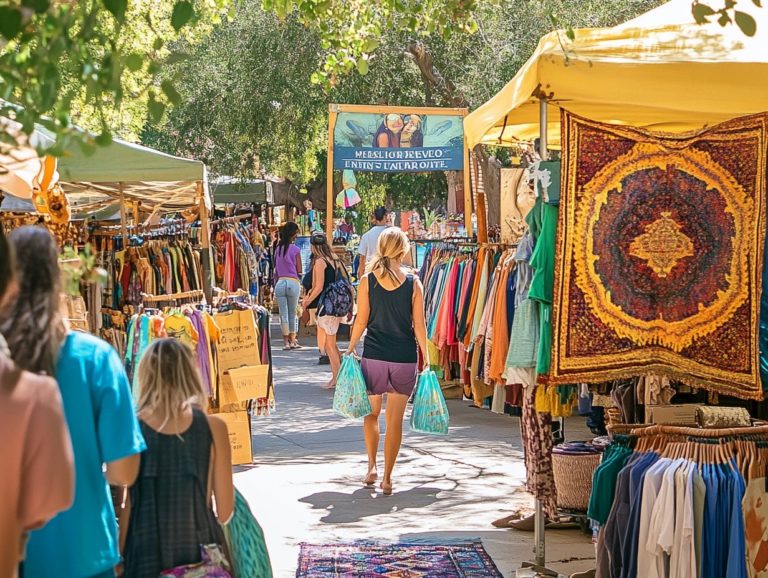Zero Waste Fashion: Tips for a Sustainable Closet
In a world where fast fashion reigns supreme, the concept of zero waste fashion presents a refreshing alternative that prioritizes sustainability and conscious consumption.
Let’s dive into what zero waste fashion really means, highlighting its stark contrast to the environmental impact of fast fashion, as well as the ethical advantages of building a wardrobe with ethical clothing.
You will discover practical tips for transitioning to a more sustainable wardrobe, engaging DIY projects for repairing clothes and upcycling old garments, and valuable resources to aid you on your eco-conscious journey.
Embrace the opportunity to redefine your style with intention, responsibility, and a commitment to conscious consumer choices.
Contents
- Key Takeaways:
- Understanding Zero Waste Fashion
- The Environmental Impact of Fast Fashion
- Benefits of Adopting a Zero Waste Wardrobe
- How to Transition to a Zero Waste Closet
- DIY Projects for Upcycling Old Clothes
- Resources for Sustainable Fashion
- Frequently Asked Questions
- What is zero waste fashion and why is it important for a sustainable closet?
- How can I incorporate zero waste fashion into my daily wardrobe?
- What are some tips for creating a minimalist and zero waste wardrobe?
- How can I support and encourage sustainable fashion practices as a consumer?
- What are some eco-friendly materials to look for when shopping for sustainable fashion?
- How can I continue to practice zero waste fashion in the long term?
Key Takeaways:
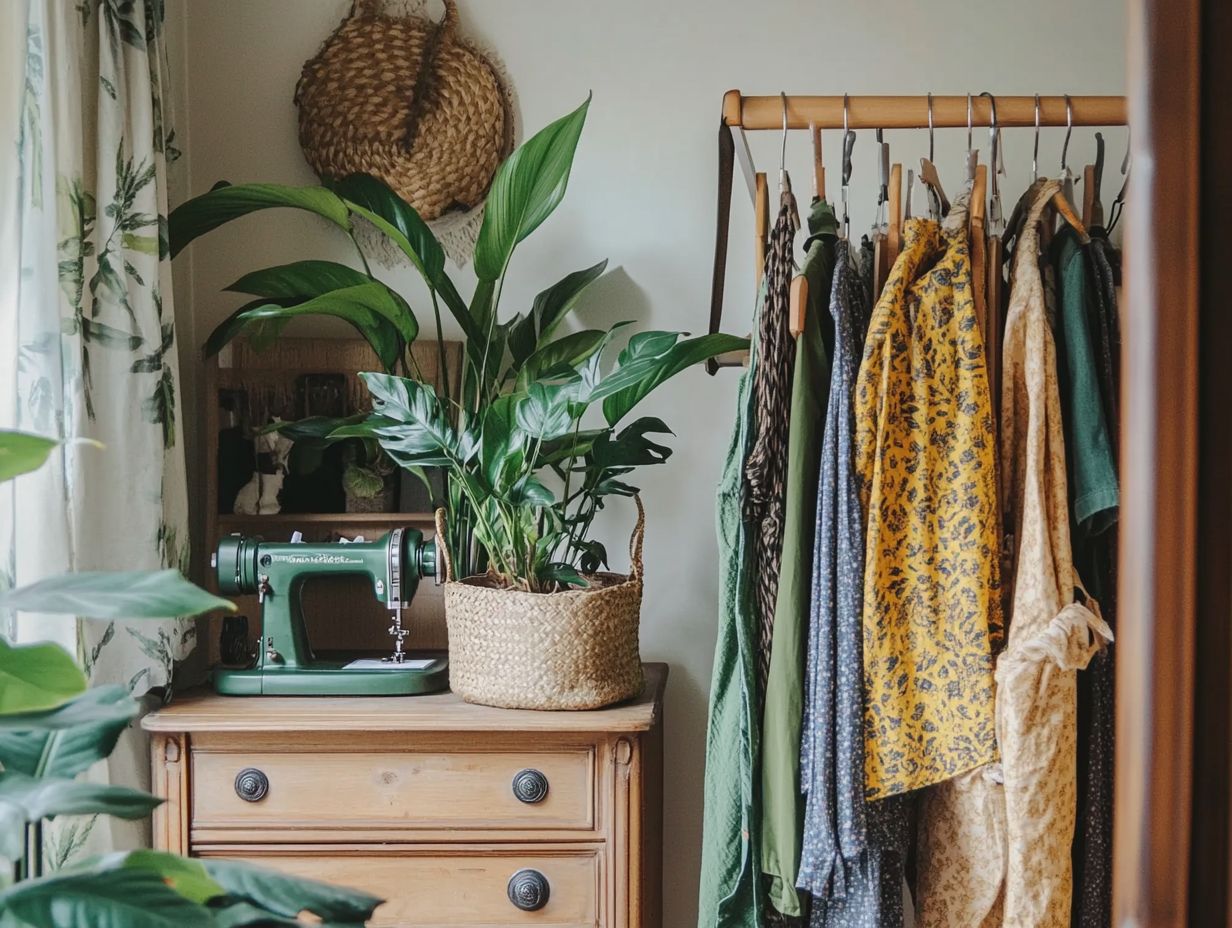
- Zero waste fashion is a sustainable approach to clothing production and consumption, aiming to minimize textile waste and environmental impact while promoting sustainable fashion.
- Fast fashion has detrimental effects on the environment, from pollution to waste and exploitation of labor, making the transition to a zero waste wardrobe a critical step to reduce these impacts.
- Adopting a zero waste wardrobe not only benefits the environment, but also promotes ethical practices and conscious consumerism. Implementing sustainable shopping and wardrobe management practices is key to achieving this.
Understanding Zero Waste Fashion
Understanding Zero Waste Fashion is essential in today s world, where embracing sustainability is not just a trend but a necessity. This approach centers on minimizing textile waste by promoting a wardrobe that values quality over quantity.
It invites you to make conscious consumer choices, encouraging a thoughtful reevaluation of your fashion habits and a transition toward a zero-waste lifestyle that benefits both the environment and the fashion industry, advocating for local shopping.
By prioritizing ethical clothing and sustainable practices, you can make a significant impact by reducing carbon emissions and environmental footprints, all while supporting the principles of a circular economy a system where products are reused, recycled, and repurposed to extend their life cycle.
What is Zero Waste Fashion?
Zero Waste Fashion is a transformative movement focused on eradicating textile waste in the fashion industry by creating garments that generate no waste during production, emphasizing the importance of natural materials.
This innovative approach focuses on principles like upcycling, where designers ingeniously repurpose materials that would otherwise end up in landfills, along with pattern making that optimizes fabric usage to ensure every inch counts. By embracing sustainable fashion practices, this movement champions ethical values that prioritize environmental responsibility and social equity.
Designers frequently explore new techniques, such as digital printing and modular design, to minimize surplus materials. As you become more aware of textile waste and its far-reaching impacts, the push for Zero Waste Fashion serves as a compelling solution that resonates with the rising demand for responsible consumption.
The Environmental Impact of Fast Fashion
The environmental impact of fast fashion is significant, with profound effects on carbon emissions and textile waste that not only burden our planet but also adversely affect garment workers globally, emphasizing the need for sustainable living.
Make the switch to a zero waste wardrobe today for a better tomorrow! Join the zero waste fashion movement today and make a difference!
Statistics and Consequences
The fast fashion industry generates over 92 million tons of waste each year. This intensifies environmental pollution and strains our precious resources, including local artisans.
This staggering figure is amplified by the fact that producing fast fashion items consumes about 79 trillion liters of water annually water that could sustain millions of people. The use of synthetic fibers in these garments adds another layer of concern, as they can take up to 200 years to decompose, escalating the environmental crisis.
As a result, the textile sector accounts for 1.2 billion tons of greenhouse gas emissions each year, matching the emissions produced by the entire airline industry. These alarming figures underscore the pressing need for you and manufacturers to rethink your approach to clothing sustainability.
Benefits of Adopting a Zero Waste Wardrobe
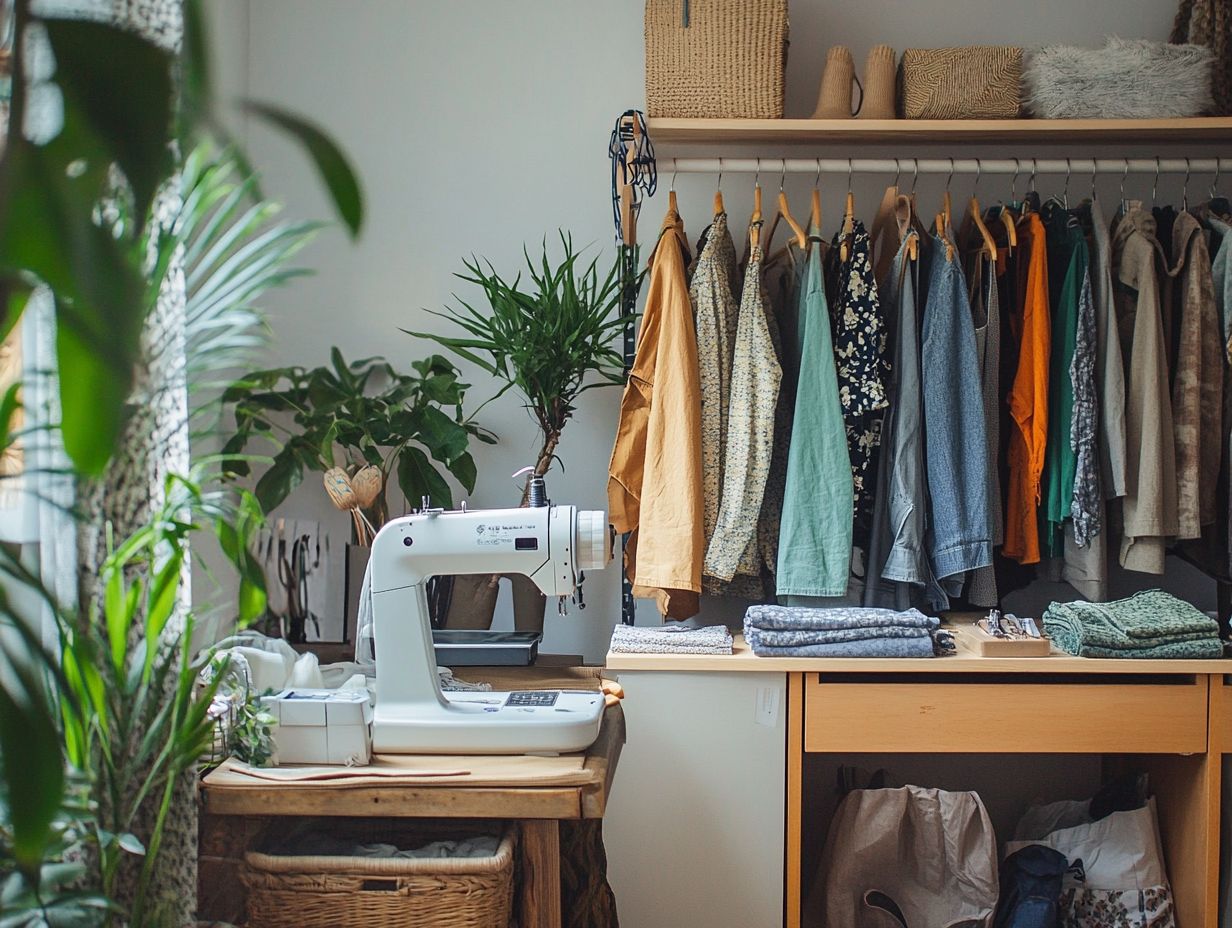
Join the movement towards a Zero Waste wardrobe! It brings a wealth of advantages your way. Not only does it significantly lessen your environmental footprint, but it also supports sustainable brands and promotes ethical clothing practices. This encourages you to rewear outfits and borrow clothes.
This conscious choice contributes to a healthier planet and nurtures a more aware consumer culture, elevating both your style and your commitment to a better world, fostering eco-consciousness.
Ethical and Environmental Advantages
The ethical and environmental benefits of a Zero Waste wardrobe are truly multifaceted. They cultivate a culture of sustainability and significantly reduce the environmental impact of your fashion choices while embracing fashion trends that align with these values.
By prioritizing local artisans and small-scale producers, you bolster your community and ensure that you’re investing in unique, high-quality items that tell a story. This approach to conscious consumerism lessens your reliance on mass-produced fast fashion, which is notorious for generating excessive textile waste one of the leading culprits behind landfill overflow.
Embracing sustainability tips, like cherishing well-loved garments, upcycling old clothes, or opting for biodegradable fabrics, amplifies your positive impact on the environment. Ultimately, adopting a Zero Waste mindset inspires mindful purchases that honor both the artisans behind the garments and the planet itself.
How to Transition to a Zero Waste Closet
Transitioning to a Zero Waste closet demands careful planning and a genuine commitment to sustainable shopping. It s all about prioritizing quality over quantity and actively participating in community events like clothing swaps and exchanges.
This approach enriches your wardrobe and fosters a sense of connection and solidarity with others who share your values and commitment to environmental responsibility.
Tips for Sustainable Shopping and Wardrobe Management
Sustainable shopping and effective wardrobe management are achievable through practices like buying second-hand clothing, thrifting, and choosing ethical brands that prioritize eco-friendly materials, supporting local shopping.
By embracing these habits, you not only reduce your environmental footprint but also uncover distinctive pieces that carry their own stories. To elevate this approach, consider scheduling regular closet cleanouts. This allows you to make space for new treasures while donating or selling items you no longer wear, keeping your wardrobe fresh and minimizing waste.
When selecting new items, take the time to research brands that emphasize sustainable practices, ensuring their materials are responsibly sourced. Plus, exploring local thrift shops can lead to delightful discoveries, transforming shopping into a fun adventure that perfectly aligns with your eco-conscious values.
DIY Projects for Upcycling Old Clothes
Engaging in DIY projects for upcycling old clothes not only extends the lifespan of your garments but also ignites your creativity. You can transform vintage clothing and other materials into distinctive, wearable art.
Creative Ways to Repurpose Clothing
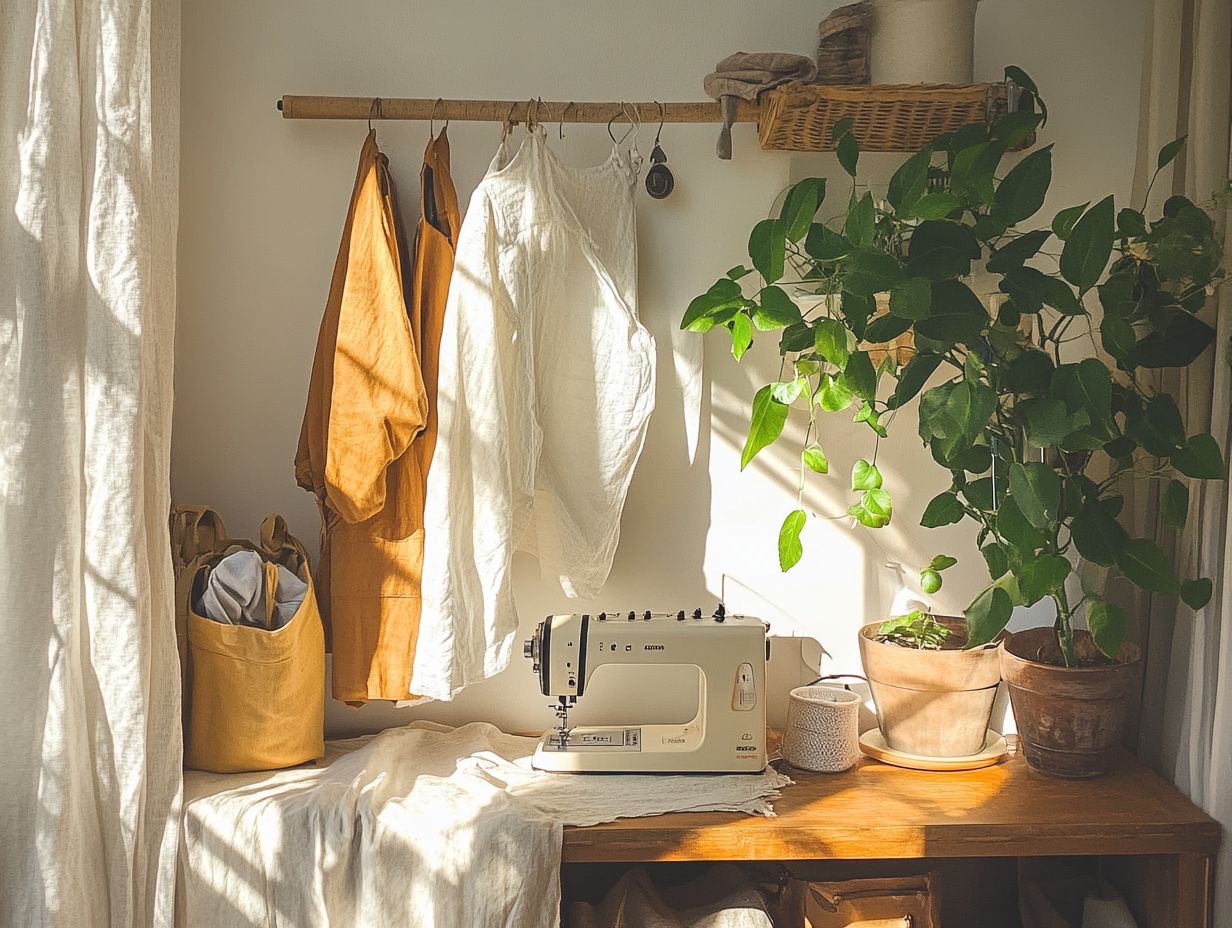
Explore creative ways to repurpose your clothing. Transform old jeans into stylish bags or oversized shirts into fashionable crop tops. The possibilities of upcycling are truly endless.
Consider sewing patches onto your faded jackets to breathe new life into them. You can create unique home d cor items by weaving fabric scraps into colorful wall hangings. Take an old sweater and craft cozy mittens, or cut a skirt to design a fresh, vibrant table runner.
These DIY projects let you showcase your style while helping the planet. By reducing waste and minimizing new products, you re not just crafting; you re contributing to a greener planet and enjoying a fulfilling creative experience.
Resources for Sustainable Fashion
Discover a treasure trove of resources for sustainable fashion. You can find eco-friendly brands, talented local artisans, and engaging community events that support ethical practices and promote sustainable living like EcoFesta.
Eco-Friendly Brands and Organizations
Numerous brands and organizations lead the way in sustainable practices. They offer ethical clothing that can be reused or recycled instead of thrown away, supporting initiatives like Kintsugi.
These organizations focus on reducing environmental impacts through innovative materials and responsible production methods. For example, Reformation and Patagonia use recycled materials in their collections and adopt transparent supply chains.
Organizations like the Ellen MacArthur Foundation advocate for strategies that promote rethinking your purchasing habits. They inspire a transformation toward a more sustainable fashion landscape by supporting repair, reuse, and recycling.
Frequently Asked Questions
What is zero waste fashion and why is it important for a sustainable closet?
Zero waste fashion aims to cut down waste in fashion, helping the environment. It’s vital for a sustainable closet because it promotes a circular economy and reduces clothing that ends up in landfills.
How can I incorporate zero waste fashion into my daily wardrobe?
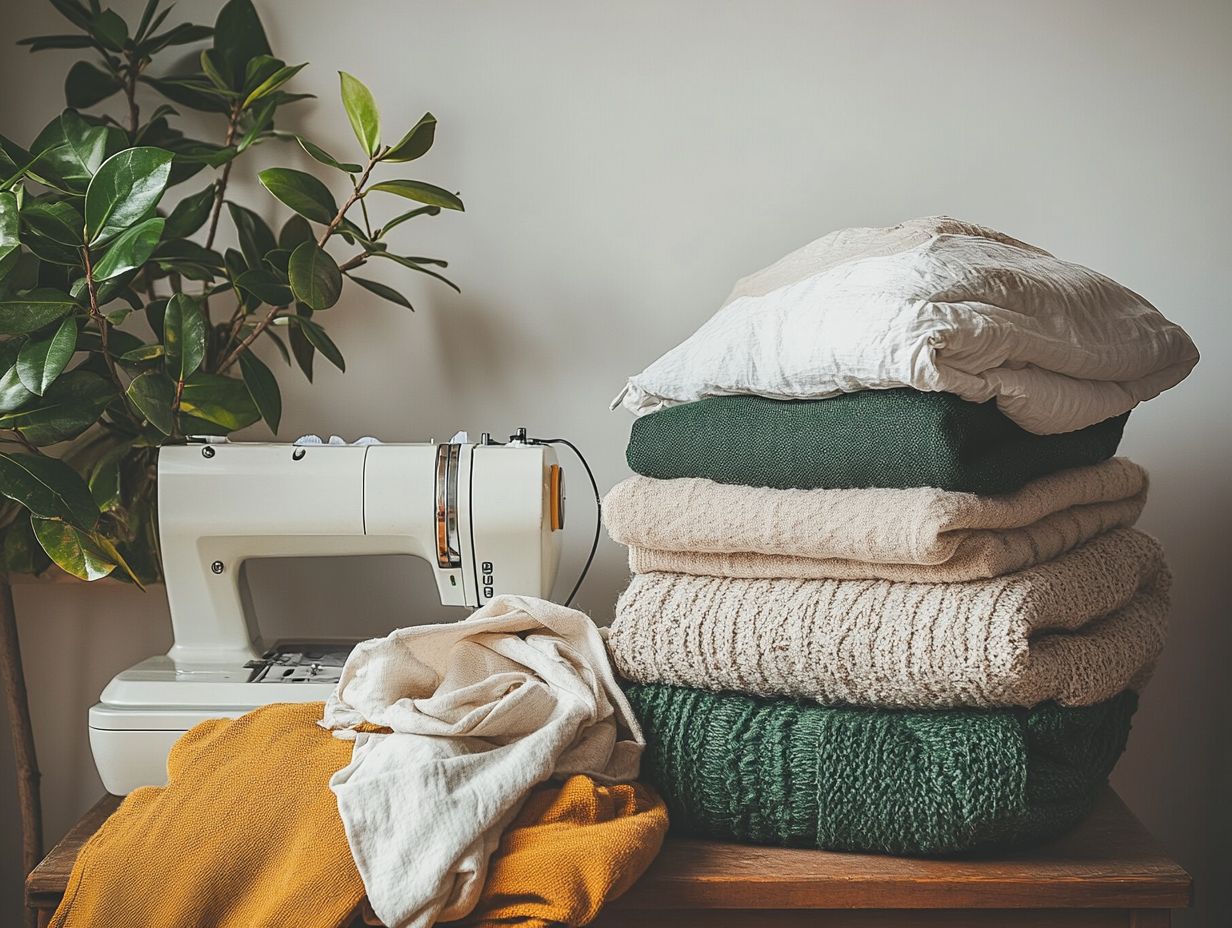
Start by shopping from sustainable and ethical brands that use eco-friendly materials. Repurpose old clothing or shop second-hand to cut down on textile waste. Consider renting or borrowing clothes for special occasions instead of buying new.
What are some tips for creating a minimalist and zero waste wardrobe?
Begin by decluttering your wardrobe. Keep only items you truly love and wear regularly. Focus on buying timeless, high-quality pieces that can be mixed and matched. Donating or recycling old clothes can also help reduce waste.
How can I support and encourage sustainable fashion practices as a consumer?
Make sustainable fashion choices and educate yourself on the fashion industry’s impact. Understand the roles of garment workers, spread awareness, and support companies that prioritize ethical practices and eco-friendly materials.
What are some eco-friendly materials to look for when shopping for sustainable fashion?
Avoid synthetic materials like polyester and nylon. Instead, opt for natural, biodegradable materials such as organic cotton, hemp, linen, and Tencel. Look for recycled or upcycled materials, like recycled polyester or upcycled denim.
Join the movement! Every step toward sustainable fashion makes a difference. Start your sustainable fashion journey today!
How can I continue to practice zero waste fashion in the long term?
You can practice zero waste fashion by repairing and mending your clothes instead of replacing them. Support local businesses and buy only what you need to reduce overall consumption.
Join the movement towards a sustainable wardrobe! Mindful shopping is key to making a positive impact.

